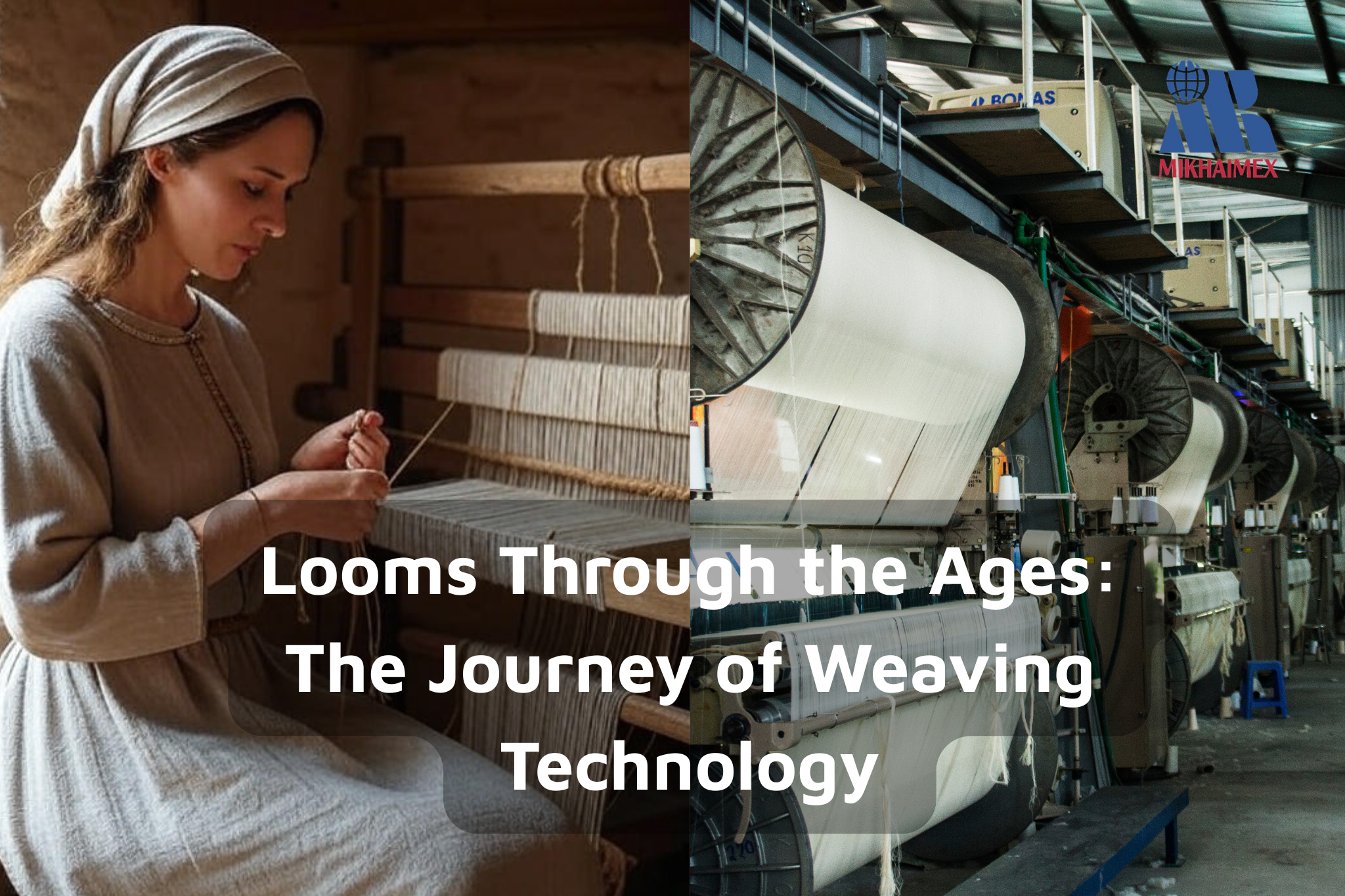Looms Through the Ages: The Journey of Weaving Technology
The loom is one of the most significant inventions in the history of textiles, revolutionizing the way humans produce fabric and laying the foundation for the modern textile industry. From the earliest hand-operated looms to today’s fully automated digital machines, the journey of loom development spans centuries and reflects remarkable technological progress.

1. The Origins of Weaving: Hand Weaving and Early Looms
Before the invention of weaving machines, people created fabric entirely by hand weaving. A weaver would sit at a simple wooden frame, passing each weft thread through the warp threads one by one, gradually forming cloth. This process demanded high levels of skill, concentration, and countless hours of labor, producing only a small quantity of fabric.
The handloom marked an early improvement, using foot pedals and a shuttle system to speed up weaving compared to purely manual methods. Though output was still limited, this innovation laid the groundwork for the mechanization of weaving.
2. The Industrial Revolution: The First Mechanical Looms
The late 18th century, during the Industrial Revolution in Britain, brought dramatic changes to weaving. It was the age when human ingenuity transformed the craft of weaving into industrial-scale production.
Key inventions included:
-
James Hargreaves’ Spinning Jenny (1764): Enabled one person to spin multiple threads at once, boosting yarn supply.
-
Edmund Cartwright’s power loom (1785): Mechanized much of the weaving process, reducing manual effort and greatly increasing efficiency.
These breakthroughs triggered a boom in the textile industry, multiplying fabric output and reducing production costs. As a result, fabrics that were once luxuries for the elite became affordable and accessible to the middle class and working population.
3. The Jacquard Loom and the Rise of Patterned Fabrics
If the power loom opened the door to mass production, then the Jacquard loom (1804), invented by Joseph Marie Jacquard, revolutionized fabric design.
Using a punched card system to control individual warp threads, the Jacquard loom could produce intricate patterns automatically. Designs that once required master artisans could now be woven with speed and consistency. This invention not only transformed the aesthetics of textiles but also influenced early computer technology—its punched card mechanism later inspired Charles Babbage’s designs for programmable machines.
From this point onward, brocades, damasks, and richly patterned silks could be produced in large quantities, fueling fashion and trade across Europe and beyond.
4. Modern Looms: Automation and Digital Weaving
By the 20th and 21st centuries, weaving had advanced far beyond mechanical looms. Modern looms integrate automation, electronics, and digital control, achieving unprecedented speed and precision.
Key innovations include:
-
Air-jet and water-jet looms: Propel the weft thread across the warp using streams of air or water, dramatically increasing weaving speed.
-
Rapier looms: Use metal arms to carry the weft, allowing the weaving of a wider variety of fibers and complex fabrics.
-
Digital weaving machines: Computer-controlled systems capable of switching colors, designs, and patterns instantly without changing hardware.
In recent years, 3D weaving technology has also emerged, capable of producing complete garments or technical fabrics directly from the loom. This reduces the need for cutting and sewing, minimizes waste, and opens new opportunities for sustainable fashion.
5. Weaving Technology and Cotton Towels at Minh Khai Textile Company

In Vietnam, Minh Khai Textile Company is a pioneer in adopting advanced weaving technology and is widely recognized as a leading producer of premium cotton towels. At its factory, the company operates automated looms imported from Japan, Germany, and South Korea, ensuring that every towel meets international standards of softness, durability, and absorbency.
Highlights of Minh Khai Towels:
-
High-quality cotton fibers: Produced from natural cotton, the towels are gentle on skin, highly absorbent, and safe even for sensitive users.
-
Wide product range: From face towels and bath towels to sports and hotel–spa towels, all are manufactured with consistent quality.
-
Modern weaving technology: Automated looms weave tightly bound loops, improving durability, reducing lint, and retaining vibrant colors over time.
-
Strict quality control: Every towel is tested for absorbency, colorfastness, and durability before reaching the customer.
Minh Khai also prioritizes environmentally friendly production, incorporating recycled water systems and efficient material usage. Thanks to these efforts, Minh Khai towels are trusted by domestic consumers and exported to demanding markets such as Japan, South Korea, and Europe.
With a vision of sustainable development, Minh Khai is committed to delivering high-quality, safe, and aesthetically refined cotton towels, strengthening the reputation of Vietnamese textile products worldwide.
6. Social Impact and the Future of Looms
Looms are more than tools of production—they represent milestones in human progress. Each stage of loom development reflects broader social change:
-
Handlooms preserve cultural traditions and showcase craftsmanship.
-
Mechanical looms powered the Industrial Revolution, creating jobs but also raising questions about working conditions.
-
Modern looms reduce physical labor, increase productivity, and align with the global pursuit of sustainable fashion.
Looking forward, the integration of artificial intelligence (AI), the Internet of Things (IoT), and smart manufacturing promises a future where weaving is fully optimized and globally interconnected.
Conclusion
The history of looms is a testament to humanity’s drive for innovation. From simple wooden handlooms to automated, digital, and 3D weaving machines, weaving technology has shaped—and will continue to shape—the textile and fashion industries worldwide.
At Minh Khai Textile, we take pride in pioneering the use of advanced looms to produce premium cotton towels that combine quality, comfort, and sustainability. By blending tradition with innovation, Minh Khai is committed to bringing the finest products to customers while carrying Vietnamese textiles into the Industry 4.0 era.


